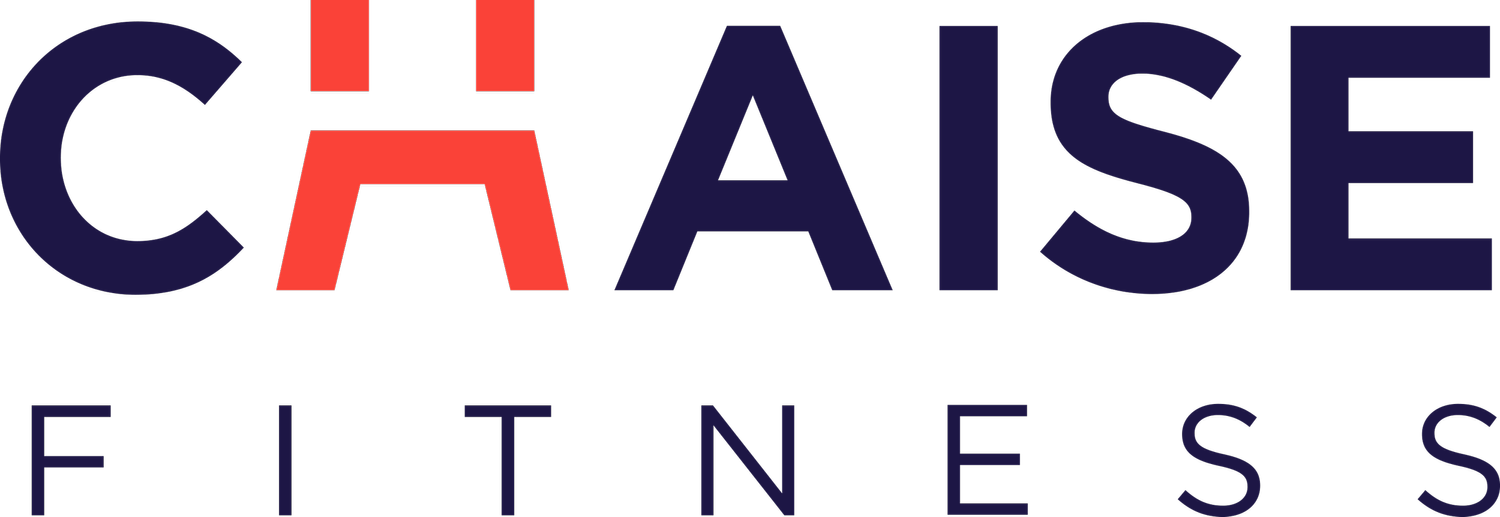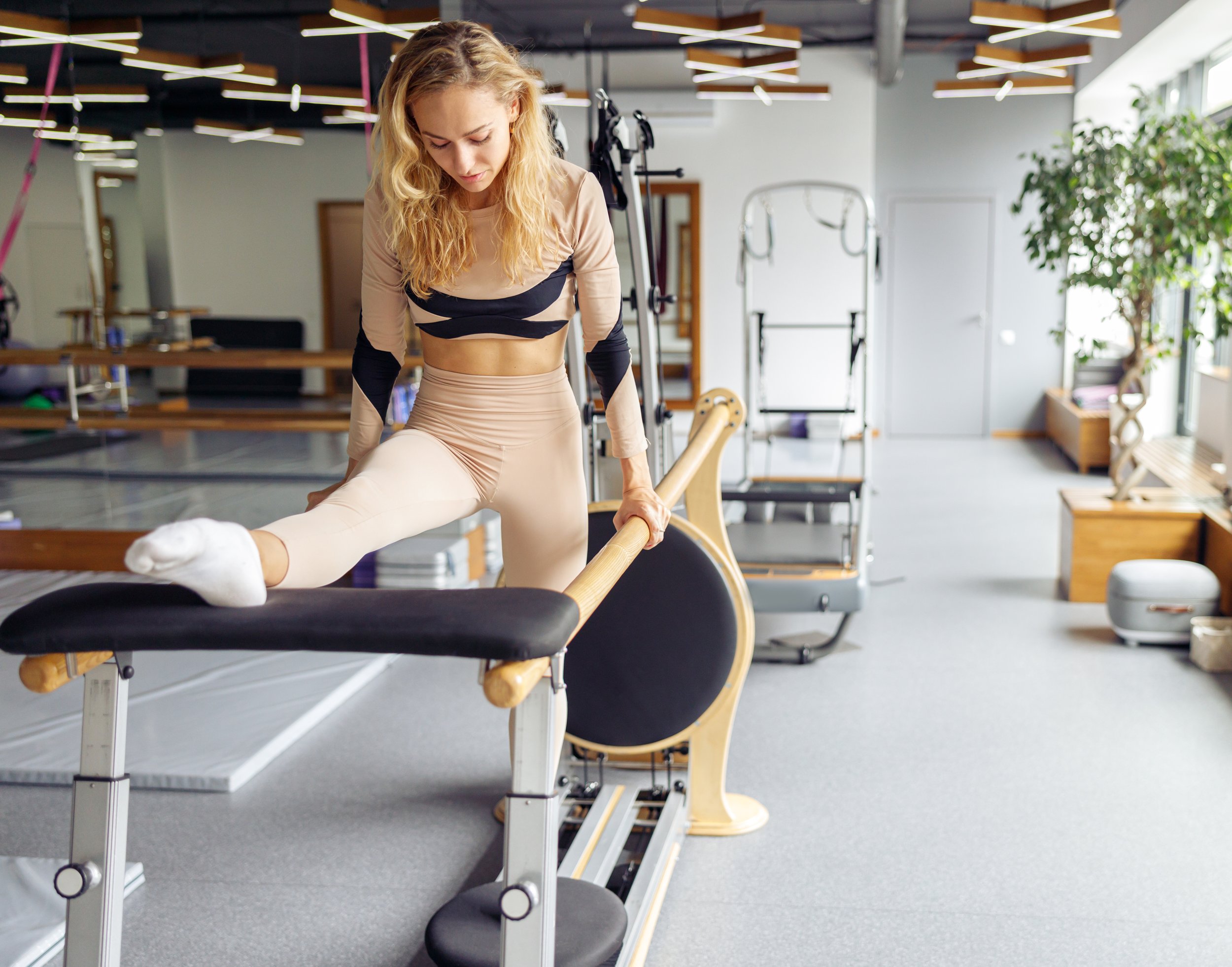Pilates Reformer Equipment
A reformer is a type of Pilates equipment that has cables, a moving carriage, and uses springs for resistance to perform a wide variety of exercises. Your reformer can be utilized to perform the same Pilates exercises using gravity as its resistance. Reformer equipment can be used to promote length, strength, flexibility, balance, and increase mobility.
Pilates Reformer Equipment
Mobility:
Mobility is defined as ‘the ability to move freely and effortlessly’. It’s often referred to as how well you can move a joint or limb in a specific pain-free range of motion without compensation.
Mobility is one of the key components to longevity in training. Having mobility and a good range of motion in the joints will unleash a lot of your body’s full potential in all you do! It helps you break through plateaus and improves your overall health.
Mobility is what you need to get strong, move well, and prevent injuries. For example, the joints of your lumbar spine are meant to be stable, while the joints of your hips and shoulders are supposed to be more mobile.
MOBILITY BENEFITS:
Increases range of motion
Builds balance and muscular stability
Improves joint strength
Develops core strength and spinal stability
Prevents injury
Pilates Reformer:
This workout focuses on Pilates “reformer” movements. Work through your own range of motion to strengthen the weakest links of your muscles. As you improve, increase your range of motion to strengthen other muscular angles. It’s important to maintain proper alignment and core control to achieve the benefits of mobility training. Also, utilize your breath as you move through each exercise.
Directions:
Perform the following exercises in the order listed slowly with control.
Warm-up by preparing the spine; 3-5 reps / exercise.
Mobility Moves: Perform 10 reps per exercise with control.
Repeat the Mobility Moves 2xs if time permits.
WARM-UP:
Low- Medium Incline
Goal: Prepares the spine’s mobility, strength, and flexibility
Cat / Cow, Opposite Elbow-Knee
Assume a quadruped position on the glide board facing the tower.
Round the back into a cat stretch, reverse it by arching the spine into ‘cow’ stretch.
Place the spine in a neutral position and extend one arm along the opposite leg by lengthening in each direction.
Bring the elbow towards the knee with minimal movement of the spine, then extend again.
Lower into quadruped position to repeat on the other side.
Perform 5 reps on each side.
Twist / Saw:
Open the glide board and sit tall at the bottom with legs extended and heels placed inside the bottom base.
Keep an elongated spine and extend the arms out to the sides with palms facing upwards.
Exhale as you rotate from the torso to the right side and pulse 3xs, then articulate the spine down towards the right leg as if you are ‘sawing’ off the baby toe.
Articulate to roll back up to the starting position and repeat to the left side.
Perform 3-5 on each side.
MOBILITY MOVES
Strengthens muscles around the joints in all planes of motion; spine, hips, shoulders
Assisted C-Curve
Goal: Improves spinal mobility by articulating the vertebrae while developing core strength
Sit facing the tower holding the cables in each hand. Bend the knees and place the heels at the top of the glide board and extend the arms.
Keeping the arms extended, round the spine into a c-curve position. (C-curve is a small tuck of the pelvis to create a ‘C’ shape of the spine).
Use the cables to assist the motion.
Roll the spine back up to sitting and repeat.
Rowing Back & Stretch:
Goal: Lengthens, strengthens, and improves posterior spinal mobility
Facing the tower, sit tall on the glide board with the legs extended long and cables in each hand.
Row the arms in toward the chest with elbows out to sides.
Keep the arms in your chest and exhale as you c-curve the spine.
Dive the torso UP and over your thighs as if there was an object around your waist. (This motion will create a space between the chest and thighs by activating the core.)
Sweep the arms straight back behind your hips.
Articulate the spine as it rolls back up to a tall sitting position.
Single Arm Circle:
Goal: Strengthens mobility of the shoulder joint
Face the tower and grab one cable with the same side hand; ex: left hand grabs left cable.
Sit or kneel facing the tower.
Perform a full range of motion circle of the arm while keeping the spine elongated. (The range of motion will depend on your shoulder mobility.)
You may isolate the movement from the shoulder only or use the torso to rotate as you circle the arm.
Perform 10 reps in each direction then change arms.
Side Bends:
Goal: Lengthens, strengthens, and improves mobility of lateral flexion
Facing one side of the glide board, place a cable into the hand closet to the tower and sit in a ‘Z-sit’ stance. (Z-sit: Leg closet to tower is bent to front of body, bottom leg is bend to the back.)
Bend the cable arm to 90’ and extend the opposite arm out to the side.
Keeping the torso elongated, extend the cable arm UP and away from the tower to create a lateral side bend, then return to the starting position.
Perform on both sides.
Hip Circles:
Goal: Improves strength and mobility of the hips and spine
Open the glide board and sit facing away from the tower with feet placed inside the bottom base.
Hold onto the glide board and carefully shift the hips off and into the rails.
Lie the head, neck, shoulders, and upper back at the bottom of the glide board.
Bend the elbows and hold onto the glide board overhead for support.
Close the glide board by bending your knees and dropping the hips into the rails.
As you get to the bottom of the range of motion, exteriorly rotate the hips by opening the legs into a diamond shape, then…
Articulate the spine upward by extending the hips and press the glide board back to the starting position.
Perform this ‘circling’ motion of the hips in both directions.
COOL DOWN:
Overall goal: lengthen muscles to increase hip mobility and prevent injury
Low- Medium Incline
Runners Lunge:
Goal: Feel the stretch in the hips, hip flexors, and glutes.
Facing the tower, place one leg into a lunge position and the other thigh is resting on the GB.
Perform stretch on both legs.
Seated Forward Fold:
Goal: Stretch and lengthen the hamstrings and spine.
Sit at the bottom of the GB with legs extended and heels resting at the bottom base.
Fold the torso forward towards the thighs and reach for the toes.
Pilates Reformer equipment:
Inadequate mobility in free moving joints causes imbalances that result in compensated movements. Throughout life, you can slowly acquire faulty movement patterns that keep you from moving the way you did when you were a child. Therefore, it is important to understand the benefits of mobility and how it can improve your everyday life.
ChaiseFitness is Among the Best Pilates Studios in NYC!
At ChaiseFitness, we believe that anyone can be fit—no matter what skill level or body type. This belief inspired the creation of our patented Reinvention Method, which is for everyone—the athlete, the dancer, the beginner, the advanced, the rebuilder. We blend Pilates, ballet, and strength training and equip you with a chair and overhead bungees so that you work out all your muscles every time. We are located in the Upper East Side in Manhattan. For more information, you can contact us at (973)996-2063, or visit our website.

